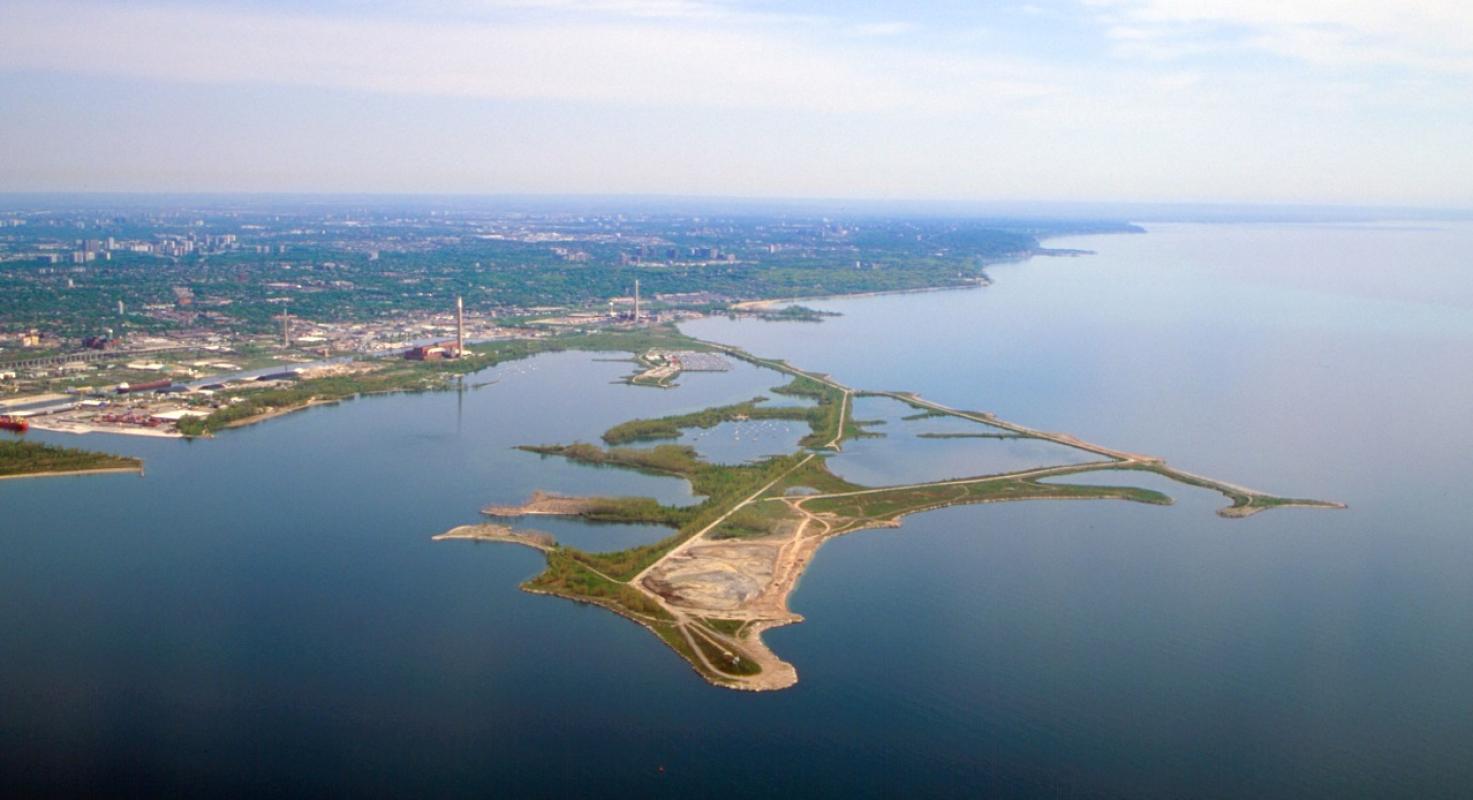Tommy Thompson Park
Located on Toronto’s waterfront in the Port Lands, Tommy Thompson Park is a unique urban wilderness minutes from downtown. The park is located on a man-made peninsula, known as the Leslie Street Spit, which extends approximately five kilometres into Lake Ontario.
The park represents some of the largest existing natural habitat on the Toronto waterfront. Wildflower meadows, cottonwood forests, coastal marshes, cobble beaches and sand dunes are just some of the habitats at Tommy Thompson Park. Wildlife, especially birds, flourish at the park, which provides one of the best nature watching areas in the Greater Toronto Area. The park also provides opportunities for recreational activities such as hiking, cycling, rollerblading and fishing.
Waterfront Toronto and Toronto and Region Conservation have completed significant natural area enhancements and the construction of three small buildings at Tommy Thompson Park as part of the revitalization of Toronto’s waterfront.
park improvement features
The three small buildings constructed as part of the project are designed to act as elemental shelters without disturbing the park’s character as an urban wilderness. Included are a new Staff Booth, an Environmental Shelter and an Ecological Research Station. The buildings emphasize an unobtrusive design and comply with the city’s bird-friendly development guidelines.
The buildings blend beautifully into their surroundings and are designed to improve user and staff experience, while also reinforcing the important research underway onsite. The new trails and structures defer to the natural habitat, offering opportunities for visitors to rest, interpret, interact with TRCA staff or take refuge from the elements.
The new Staff Booth features display space for park information and functions as an interpretation center allowing staff to interact with visitors and provide park information. The Environmental Shelter is an outdoor amphitheatre that functions as an outdoor classroom and observation area. Sheltered views from the covered outdoor classroom allow for wetland habitat interpretation, and a generous bench is provided that affords an entire class a comfortable look out to the marsh. The newly constructed Ecological Research Station is a much-needed upgrade to a facility that provides valuable information regarding the park’s 300-plus bird species. It will allow research activities to expand while also allowing for better interpretive and educational program opportunities.
The natural restoration improvements include new trails, aquatic, wetland and terrestrial habitat enhancements and the installation of essential habitat features both in the water and on land. These improvements benefit a wide range of species that use the park, including invertebrates, birds, fish, small mammals, reptiles and amphibians and further enhance the park as a biological centre on the Toronto waterfront.
learn more
sustainable design
To protect the integrity of this magnificent urban gem, the interaction between visitors and natural habitats was carefully considered when planning, designing and constructing the park improvements. The interventions were thoughtfully designed to minimize impact on their surroundings while supporting the enjoyment, management and interpretation of the park.
Key to the design process was the exceptional ability of nature to reclaim the site and transform man made materials and construction waste into a unique urban wilderness. It is this transformative power of nature that inspired the approach to this project.
The structures were designed to seamlessly integrate with the site, and all of the interventions are minimalistic in terms of both materials and systems, designed to withstand the harsh elements with minimal maintenance. At the end of their life, the structures will be stripped back to their elemental materials – concrete and steel – and be left in situ to be taken over by nature in the same way that nature has appropriated the rubble fill that supports the park.
tommy thompson park master plan
The Toronto Harbour Commissioners (now Toronto Port Authority) began construction of the spit in the late 1950s and, since that time, it has been the site for the disposal of dredged material from the Outer Harbour and surplus fill from development sites within Toronto.
In 1989, Toronto and Region Conservation (TRCA) completed an extensive provincial environmental assessment and planning process which resulted in the creation of the Tommy Thompson Park Master Plan. In 1992, an Addendum was prepared and in 1995, TRCA received approval to proceed with implementation from the Ministry of the Environment. This planning process became the foundation for the creation of a unique urban wilderness feature on Toronto's waterfront.
Until recently, limited funds were available to implement the Master Plan with the City of Toronto contributing funding for interim management. A funding partnership between TRCA and Waterfront Toronto was established to realize key components of the Master Plan including natural area enhancements and the installation of park infrastructure. The main objectives of the Tommy Thompson Park Master Plan are to:
- Preserve significant species;
- Protect environmentally significant areas;
- Enhance aquatic and terrestrial habitat; and
- Enhance public recreational opportunities
The Natural Area Enhancement Plan includes a Terrestrial Natural Area Enhancement Plan and an Aquatic Habitat Enhancement Plan. Improvements to the park infrastructure include: a park gateway; an environmental shelter and washroom facility; nature viewing and park amenities; an ecological research station; and the trail system.
TRCA is responsible for the development and implementation of the Master Plan and the annual operating program, which includes both biological and public interest activities.
For more information about the planning and future development of the Port Lands and the Don Mouth Naturalization project, visit PortLandsTO.ca

